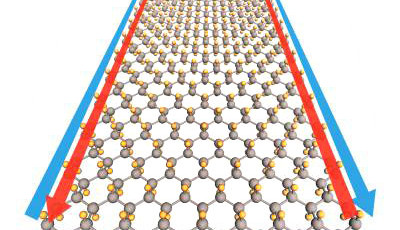Zero Resistance but not Superconducting?
on

The
Stanene is a type of topological insulator where the body of the material is an insulator but the surface and edges are electrically conductive. As electrons move around in the surfaces and edges of topological insulators, their spin axis aligns with their direction of flow. This effect (known as the quantum spin Hall state) means that electrons can't easily reverse direction. In normal conductors when they hit an impurity they scatter and dissipate energy.
Although Stanene and superconductors can both exhibit zero resistance, Zhang emphasized that Stanene is not a superconductor. While the edges of Stanene act as a zero resistance path for electrons, they still encounter contact resistance at their junctions with normal conductors. In superconductors however, electrons travel in pairs, a phenomenon that eliminates contact resistance so that normal conductors effectively act like superconductors when in contact with a superconductor.


Discussion (0 comments)